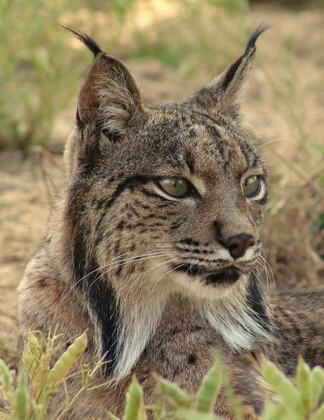|
Grevillea Acrobotrya
''Grevillea acrobotrya'' is a species of flowering plant in the family Proteaceae and is endemic to the southwest of Western Australia. It is a prickly, spreading to erect shrub with egg-shaped to trowel-shaped leaves with sharply-tipped lobes, and white to cream-coloured flowers with smaller leaves at the base. Description ''Grevillea acrobotrya'' is a spreading to erect shrub that typically grows to a height of and has woolly-hairy branchlets, but glabrous flowering branchlets. Its leaves are egg-shaped with the narrower end towards the base, or trowel-shaped, long and wide with five to nine sharply-pointed lobes. The branches bearing flowers have smaller leaves that have three narrowly triangular, sharply pointed lobes and are up to about long. The flowers are arranged in more or less spherical groups on the ends of branches and in leaf axils, each flower on a pedicel long, the perianth white to cream-coloured, the limb chocolate-coloured and the pistil long. Flower ... [...More Info...] [...Related Items...] OR: [Wikipedia] [Google] [Baidu] |
Australian National Botanic Gardens
The Australian National Botanic Gardens (ANBG) is a heritage-listed botanical garden located in , Canberra, in the Australian Capital Territory, Australia. Established in 1949, the Gardens is administered by the Australian Government's Department of Agriculture, Water and the Environment. The botanic gardens was added to the Commonwealth Heritage List on 22 June 2004. The botanic gardens is the largest living collection of native Australian flora. The mission of the ANBG is to "study and promote Australia's flora". The gardens maintains a wide variety of botanical resources for researchers and cultivates native plants threatened in the wild. The herbarium code for the Australian National Botanic Gardens is ''CANB''. History When Canberra was being planned in the 1930s, the establishment of the gardens was recommended in a report in 1933 by the Advisory Council of Federal Capital Territory. In 1935, The Dickson Report set forth a framework for their development. A large site fo ... [...More Info...] [...Related Items...] OR: [Wikipedia] [Google] [Baidu] |
Swan River (Western Australia)
The Swan River () is a river in the south west of Western Australia. The river runs through the metropolitan area of Perth, Western Australia's capital and largest city. Course of river The Swan River estuary flows through the city of Perth. Its lower reaches are relatively wide and deep, with few constrictions, while the upper reaches are usually quite narrow and shallow. The Swan River drains the Avon and coastal plain catchments, which have a total area of about . It has three major tributaries, the Avon River, Canning River and Helena River. The latter two have dams (Canning Dam and Mundaring Weir) which provide a sizeable part of the potable water requirements for Perth and the regions surrounding. The Avon River contributes the majority of the freshwater flow. The climate of the catchment is Mediterranean, with mild wet winters, hot dry summers, and the associated highly seasonal rainfall and flow regime. The Avon rises near Yealering, southeast of Perth: it meand ... [...More Info...] [...Related Items...] OR: [Wikipedia] [Google] [Baidu] |
Proteales Of Australia
Proteales is an order of flowering plants consisting of three (or four) families. The Proteales have been recognized by almost all taxonomists. The representatives of the Proteales are very different from each other. The order contains plants that do not look alike at all. What they have in common is seeds with little or no endosperm. The ovules are often atropic. Families In the classification system of Dahlgren the Proteales were in the superorder Proteiflorae (also called Proteanae). The APG II system of 2003 also recognizes this order, and places it in the clade eudicots with this circumscription: * order Proteales :* family Nelumbonaceae :* family Proteaceae family Platanaceae">Platanaceae.html" ;"title=" family Platanaceae"> family Platanaceae with "+ ..." = optionally separate family (that may be split off from the preceding family). The APG III system of 2009 followed this same approach, but favored the narrower circumscription of the three families, firmly reco ... [...More Info...] [...Related Items...] OR: [Wikipedia] [Google] [Baidu] |
Eudicots Of Western Australia
The eudicots, Eudicotidae, or eudicotyledons are a clade of flowering plants mainly characterized by having two seed leaves upon germination. The term derives from Dicotyledons. Traditionally they were called tricolpates or non-magnoliid dicots by previous authors. The botanical terms were introduced in 1991 by evolutionary botanist James A. Doyle and paleobotanist Carol L. Hotton to emphasize the later evolutionary divergence of tricolpate dicots from earlier, less specialized, dicots. Numerous familiar plants are eudicots, including many common food plants, trees, and ornamentals. Some common and familiar eudicots include sunflower, dandelion, forget-me-not, cabbage, apple, buttercup, maple, and macadamia. Most leafy trees of midlatitudes also belong to eudicots, with notable exceptions being magnolias and tulip trees which belong to magnoliids, and ''Ginkgo biloba'', which is not an angiosperm. Description The close relationships among flowering plants with tricolpate po ... [...More Info...] [...Related Items...] OR: [Wikipedia] [Google] [Baidu] |
Endemic Flora Of Western Australia
Endemism is the state of a species being found in a single defined geographic location, such as an island, state, nation, country or other defined zone; organisms that are indigenous to a place are not endemic to it if they are also found elsewhere. For example, the Cape sugarbird is found exclusively in southwestern South Africa and is therefore said to be ''endemic'' to that particular part of the world. An endemic species can be also be referred to as an ''endemism'' or in scientific literature as an ''endemite''. For example '' Cytisus aeolicus'' is an endemite of the Italian flora. '' Adzharia renschi'' was once believed to be an endemite of the Caucasus, but it was later discovered to be a non-indigenous species from South America belonging to a different genus. The extreme opposite of an endemic species is one with a cosmopolitan distribution, having a global or widespread range. A rare alternative term for a species that is endemic is "precinctive", which applies to s ... [...More Info...] [...Related Items...] OR: [Wikipedia] [Google] [Baidu] |
Grevillea
''Grevillea'', commonly known as spider flowers, is a genus of about 360 species of evergreen flowering plants in the family Proteaceae. Plants in the genus ''Grevillea'' are shrubs, rarely trees, with the leaves arranged alternately along the branches, the flowers zygomorphic, arranged in racemes at the ends of branchlets, and the fruit a follicle that splits down one side only, releasing one or two seeds. Description Plants in the genus ''Grevillea'' are shrubs, rarely small trees with simple or compound leaves arranged alternately along the branchlets. The flowers are zygomorphic and typically arranged in pairs along a sometimes branched raceme at the ends of branchlets. The flowers are bisexual, usually with four tepals in a single whorl. There are four stamens and the gynoecium has a single carpel. The fruit is a thin-walled follicle that splits down only one side, releasing one or two seeds before the next growing season. Taxonomy The genus ''Grevillea'' was first forma ... [...More Info...] [...Related Items...] OR: [Wikipedia] [Google] [Baidu] |
International Union For Conservation Of Nature
The International Union for Conservation of Nature (IUCN; officially International Union for Conservation of Nature and Natural Resources) is an international organization working in the field of nature conservation and sustainable use of natural resources. It is involved in data gathering and analysis, research, field projects, advocacy, and education. IUCN's mission is to "influence, encourage and assist societies throughout the world to conserve nature and to ensure that any use of natural resources is equitable and ecologically sustainable". Over the past decades, IUCN has widened its focus beyond conservation ecology and now incorporates issues related to sustainable development in its projects. IUCN does not itself aim to mobilize the public in support of nature conservation. It tries to influence the actions of governments, business and other stakeholders by providing information and advice and through building partnerships. The organization is best known to the wider pu ... [...More Info...] [...Related Items...] OR: [Wikipedia] [Google] [Baidu] |
Endangered Species (IUCN Status)
Endangered species as classified by the International Union for Conservation of Nature (IUCN), are species which have been categorized as very likely to become extinct in their known native ranges in the near future. On the IUCN Red List, endangered is the second most severe conservation status for wild populations in the IUCN's schema after critically endangered. In 2012, the IUCN Red List featured 3,079 animal and 2,655 plant species as endangered worldwide. The figures for 1998 were 1,102 and 1,197 respectively. IUCN Red List The IUCN Red List is a list of species which have been assessed according to a system of assigning a global conservation status. According to the latest system used by the IUCN, a species can be "Data Deficient" (DD) species – species for which more data and assessment is required before their situation may be determined – as well species comprehensively assessed by the IUCN's species assessment process. A species can be "Near ... [...More Info...] [...Related Items...] OR: [Wikipedia] [Google] [Baidu] |
Swan Coastal Plain
The Swan Coastal Plain in Western Australia is the geographic feature which contains the Swan River as it travels west to the Indian Ocean. The coastal plain continues well beyond the boundaries of the Swan River and its tributaries, as a geological and biological zone, one of Western Australia's Interim Biogeographic Regionalisation for Australia (IBRA) regions.IBRA Version 6.1 data It is also one of the distinct physiographic provinces of the larger West Australian Shield division. Location and description The coastal plain is a strip on the Indian Ocean coast directly west of the |
Geraldton Sandplains
Geraldton (Wajarri: ''Jambinu'', Wilunyu: ''Jambinbirri'') is a coastal city in the Mid West region of the Australian state of Western Australia, north of the state capital, Perth. At June 2018, Geraldton had an urban population of 37,648. Estimated resident population, 30 June 2018. Geraldton is the seat of government for the City of Greater Geraldton, which also incorporates the town of Mullewa, Walkaway and large rural areas previously forming the shires of Greenough and Mullewa. The Port of Geraldton is a major west coast seaport. Geraldton is an important service and logistics centre for regional mining, fishing, wheat, sheep and tourism industries. History Aboriginal Clear evidence has established Aboriginal people living on the west coast of Australia for at least 40,000 years, though at present it is unclear when the first Aboriginal people reached the area around Geraldton. The original local Aboriginal people of Geraldton are the Amangu people, with the Nan ... [...More Info...] [...Related Items...] OR: [Wikipedia] [Google] [Baidu] |




.jpg)



